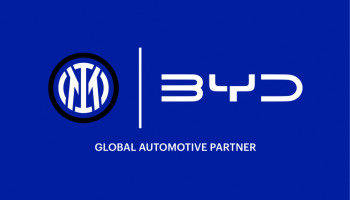Hyundai Bayon was revealed not long ago, the all-new SUV based on the carmaker's i20 hatchback will sit below the Creta and the Kona in the brand's global lineup. Now we have a much better look at the Bayon out in the open world. The Bayon is Hyundai's answer to a long list of crossover SUVs sold overseas, starting with the Volkswagen T-Cross, Nissan Juke, and the Ford Puma, to name a few. It shares its underpinnings with the latest i20 but gets unique exterior styling that is quite similar to the updated Kona.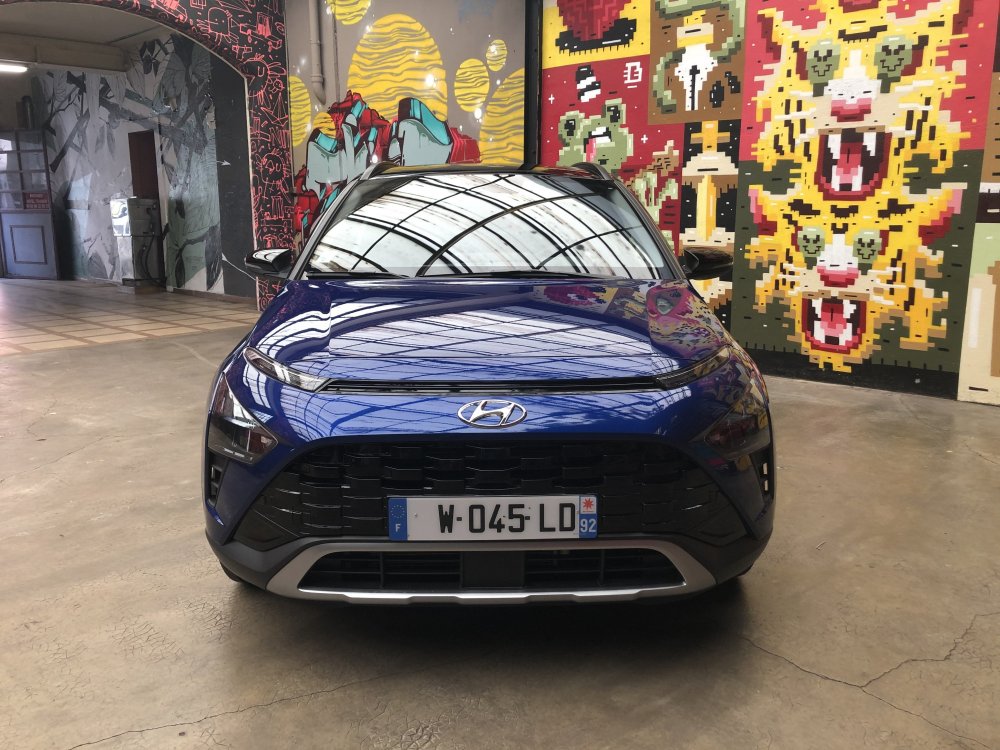 The all-new Bayon features a compact exterior, a roomy interior, and a long list of intelligent safety and connectivity features that make it stand out in its segment. It gets styling cues inspired by the latest Kona. These include the thin DRLs and arrow-shaped headlamps. The arrow-shaped theme also continues at the back, which gets a similar design. The Bayon SUV gets strong shoulder lines at the side, but the tapering roofline gives it more of a crossover-like look. Strong cladding all around and faux skid plates at the front and back give it a more rugged appearance.
The all-new Bayon features a compact exterior, a roomy interior, and a long list of intelligent safety and connectivity features that make it stand out in its segment. It gets styling cues inspired by the latest Kona. These include the thin DRLs and arrow-shaped headlamps. The arrow-shaped theme also continues at the back, which gets a similar design. The Bayon SUV gets strong shoulder lines at the side, but the tapering roofline gives it more of a crossover-like look. Strong cladding all around and faux skid plates at the front and back give it a more rugged appearance.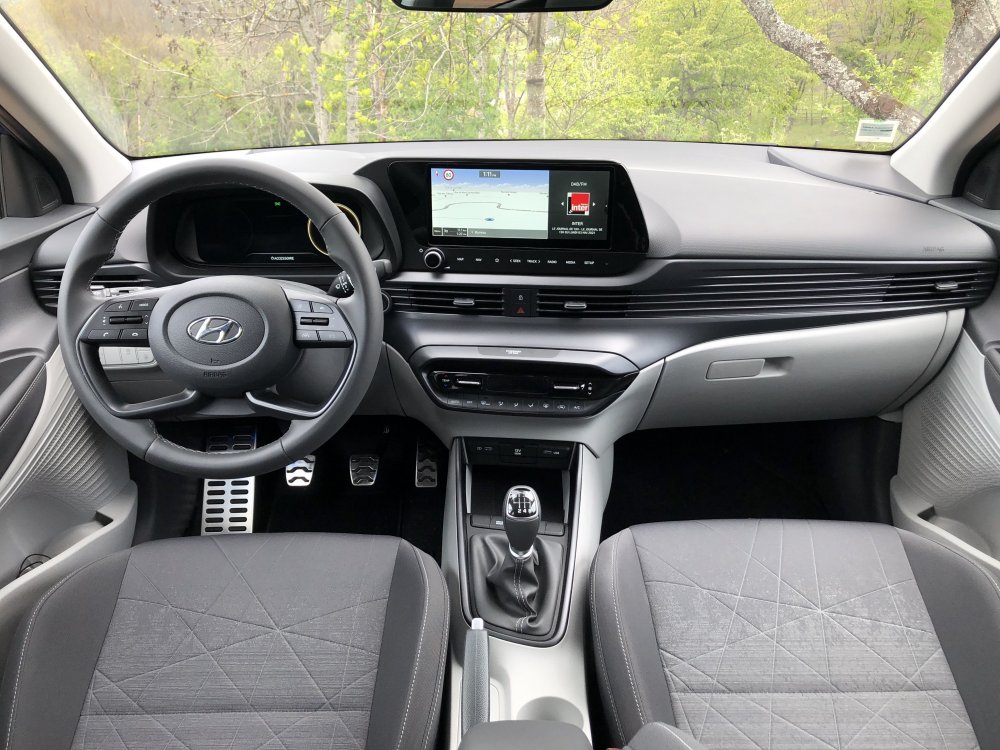 Bayon features a clean, roomy, well-lit interior. There is a strong focus on maximizing front and rear passenger comfort and increasing boot space. The interior is defined by a range of connectivity equipment, including a 10.25-inch digital cluster and a 10.25-inch AVN or 8-inch Display Audio. Occupants can benefit from LED ambient lighting technology integrated into the front passenger foot areas, door wells, and front door pull handle areas, as well as the storage area below the center console.
Bayon features a clean, roomy, well-lit interior. There is a strong focus on maximizing front and rear passenger comfort and increasing boot space. The interior is defined by a range of connectivity equipment, including a 10.25-inch digital cluster and a 10.25-inch AVN or 8-inch Display Audio. Occupants can benefit from LED ambient lighting technology integrated into the front passenger foot areas, door wells, and front door pull handle areas, as well as the storage area below the center console.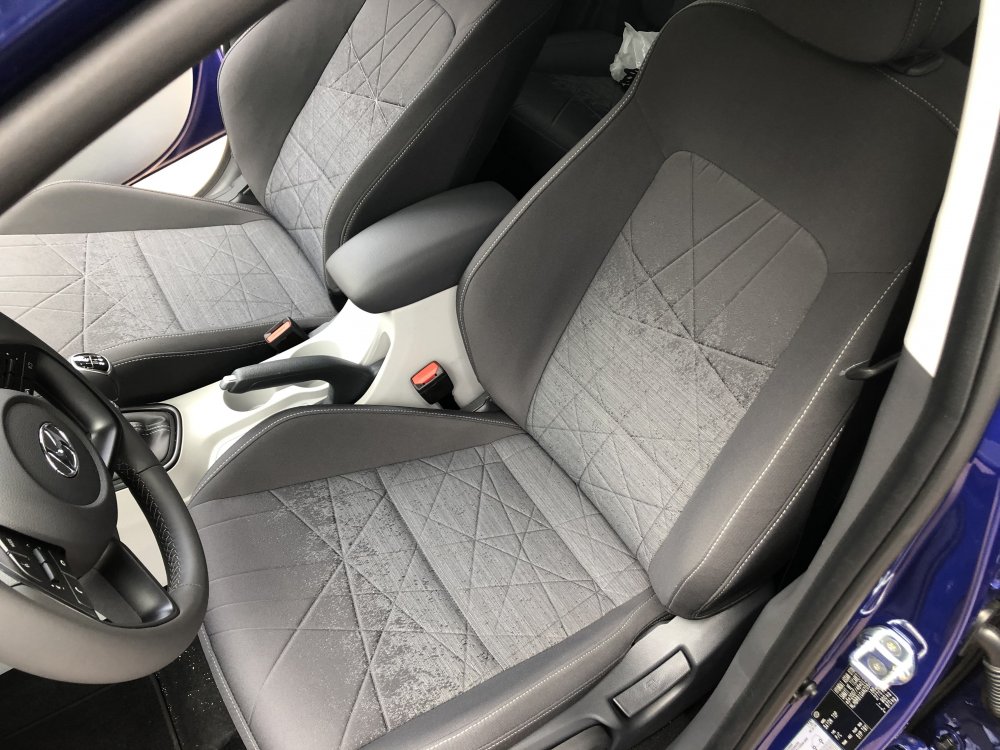 Hyundai says the Bayon is an Urban-focused vehicle and its interior has been designed keeping in mind utility, space, and comfort. A 2,580mm wheelbase (identical to the i20’s) allows front-seat passengers 1,072mm of legroom, while the rear seats offer 882mm, and the 411-liter boot can be extended to 1,205 liters with the split rear bench folded flat.
Hyundai says the Bayon is an Urban-focused vehicle and its interior has been designed keeping in mind utility, space, and comfort. A 2,580mm wheelbase (identical to the i20’s) allows front-seat passengers 1,072mm of legroom, while the rear seats offer 882mm, and the 411-liter boot can be extended to 1,205 liters with the split rear bench folded flat.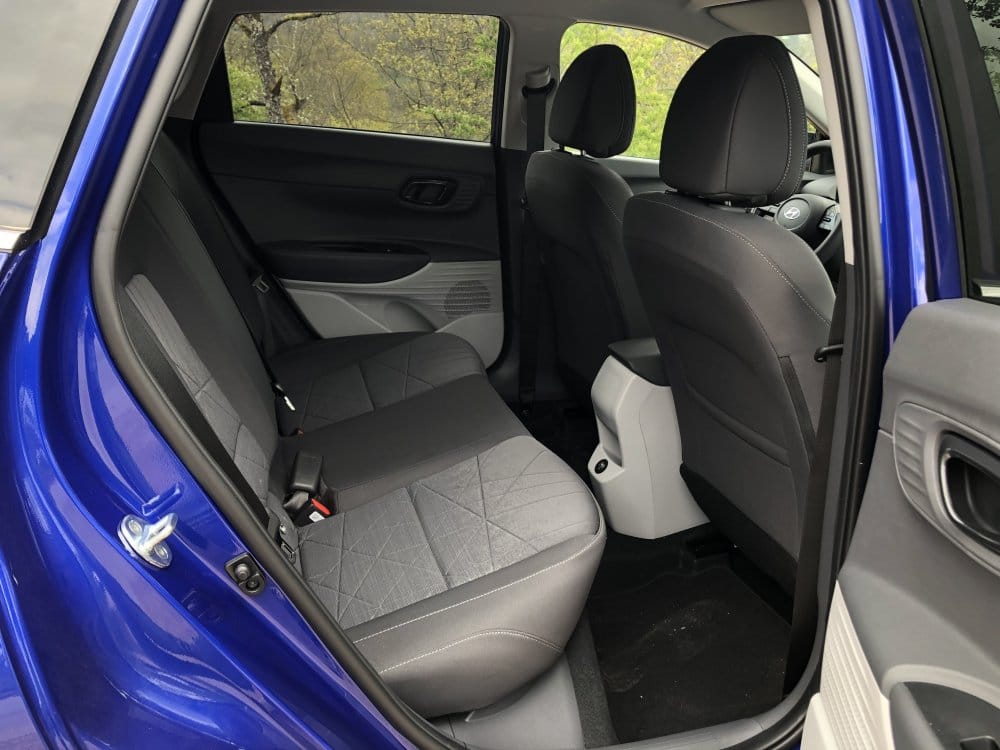 Two engine options are offered on the Bayon globally. At the top of the line-up is a 1.0-liter T-GDi engine with 48V and 120 or 100 PS. This can be coupled with the 6-speed intelligent Manual Transmission (6iMT) or a 7-speed dual-clutch transmission (7DCT). The 100 PS version of the 1.0-liter T-GDi is also available without 48V and can be paired with a 6-speed manual transmission (6MT) or 7DCT. The 1.0-liter T-GDi engine with and without 48V also comes with three drive modes to optimize the engine response and steering performance based on driving conditions. These are Eco, Normal, and Sport. A 1.2-liter MPi engine with 84 PS paired with 5MT is available as well.
Two engine options are offered on the Bayon globally. At the top of the line-up is a 1.0-liter T-GDi engine with 48V and 120 or 100 PS. This can be coupled with the 6-speed intelligent Manual Transmission (6iMT) or a 7-speed dual-clutch transmission (7DCT). The 100 PS version of the 1.0-liter T-GDi is also available without 48V and can be paired with a 6-speed manual transmission (6MT) or 7DCT. The 1.0-liter T-GDi engine with and without 48V also comes with three drive modes to optimize the engine response and steering performance based on driving conditions. These are Eco, Normal, and Sport. A 1.2-liter MPi engine with 84 PS paired with 5MT is available as well.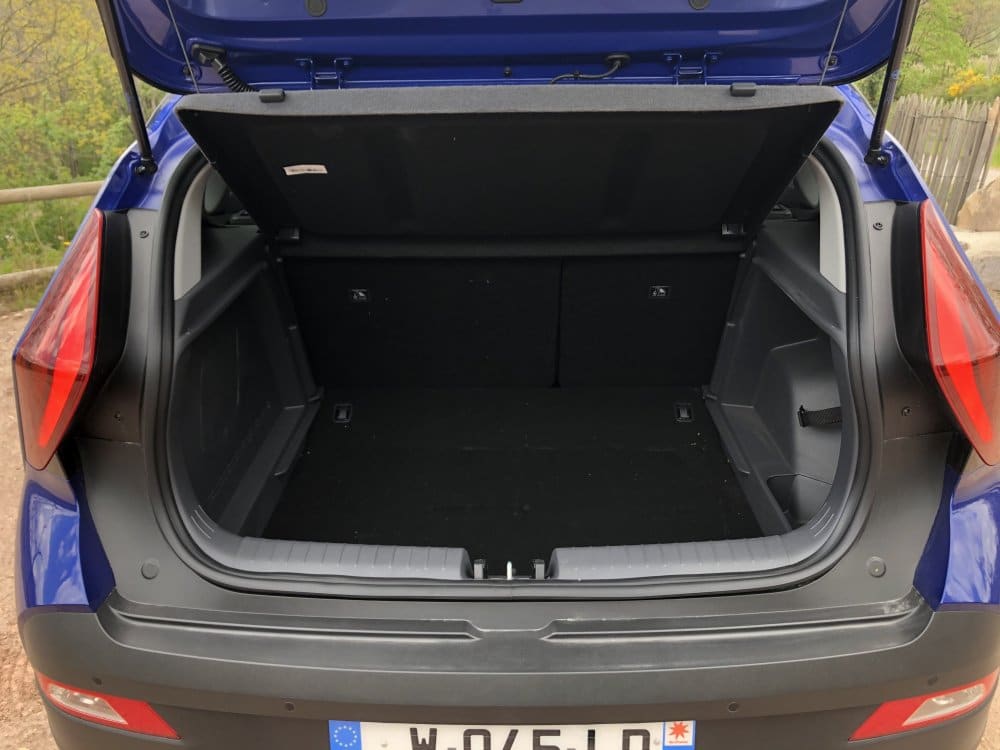 Bayon is the first Hyundai SUV to come equipped with Rev Matching, a feature usually reserved for Hyundai’s high-performance models. Rev matching synchronizes the engine to the output shaft, allowing for smoother or sportier downshifts. It will be available for the 1.0-liter T-GDi engine when paired with the 7DCT for all drive modes, and for the 1.0-liter T-GDi engine with 48V when paired with the 6iMT in the Sport mode.
Bayon is the first Hyundai SUV to come equipped with Rev Matching, a feature usually reserved for Hyundai’s high-performance models. Rev matching synchronizes the engine to the output shaft, allowing for smoother or sportier downshifts. It will be available for the 1.0-liter T-GDi engine when paired with the 7DCT for all drive modes, and for the 1.0-liter T-GDi engine with 48V when paired with the 6iMT in the Sport mode.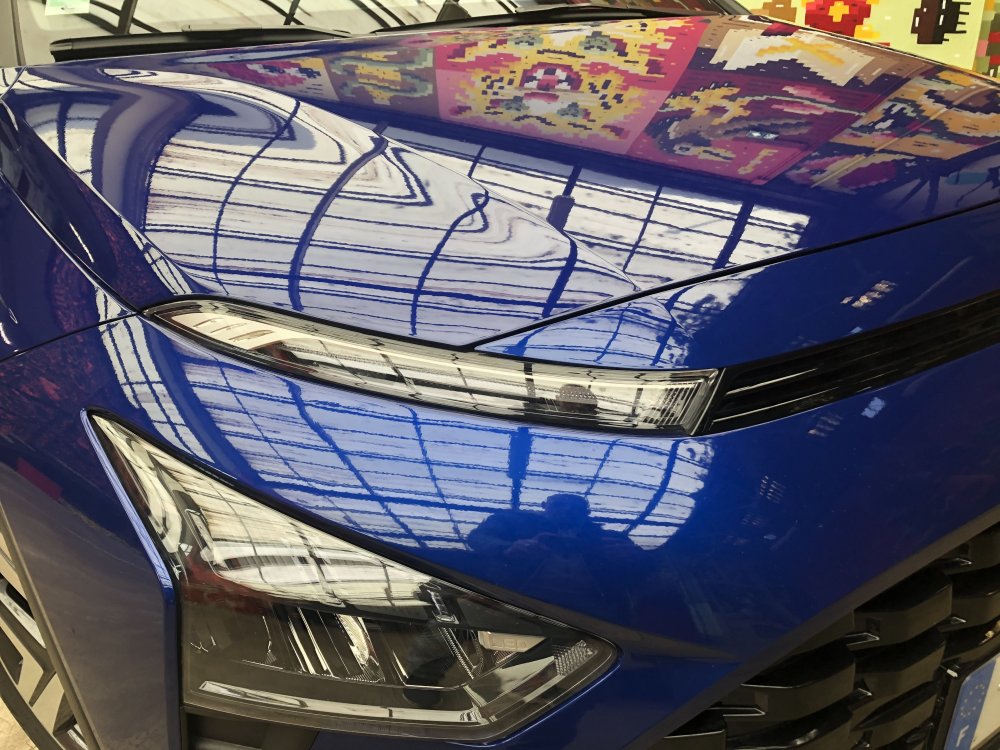 Bayon shares its safe and robust DNA with the other members of the Hyundai SUV family, and it has the safety features to match. A number of semi-autonomous driving features set BAYON apart from its competitors. Lane Following Assist (LFA) works to keep the vehicle centered in its lane. Forward Collision-Avoidance Assist (FCA) first sounds an alarm, then, if necessary, applies the brakes to prevent a collision from occurring.
Bayon shares its safe and robust DNA with the other members of the Hyundai SUV family, and it has the safety features to match. A number of semi-autonomous driving features set BAYON apart from its competitors. Lane Following Assist (LFA) works to keep the vehicle centered in its lane. Forward Collision-Avoidance Assist (FCA) first sounds an alarm, then, if necessary, applies the brakes to prevent a collision from occurring.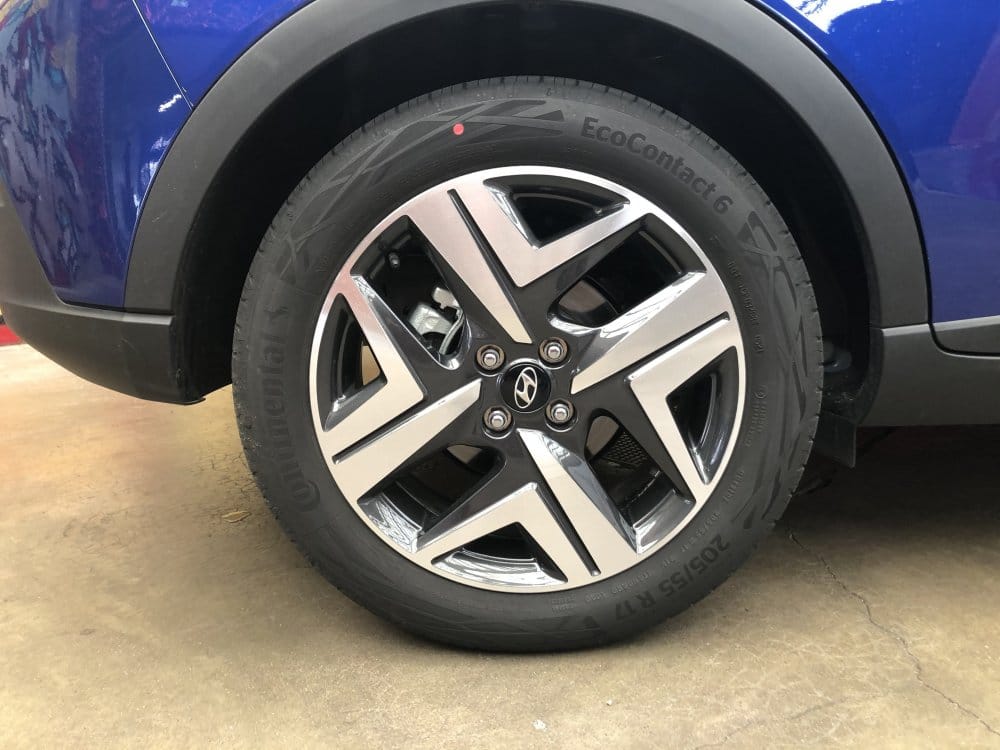 This feature includes car, pedestrian, and cyclist detection, as well as Junction Turning, which can apply the brakes to prevent a collision with an oncoming car when turning left at an intersection. Another advanced feature, Navigation-based Smart Cruise Control (NSCC), uses data from the vehicle’s navigation system to adjust speed autonomously when driving on a highway or expressway.
This feature includes car, pedestrian, and cyclist detection, as well as Junction Turning, which can apply the brakes to prevent a collision with an oncoming car when turning left at an intersection. Another advanced feature, Navigation-based Smart Cruise Control (NSCC), uses data from the vehicle’s navigation system to adjust speed autonomously when driving on a highway or expressway.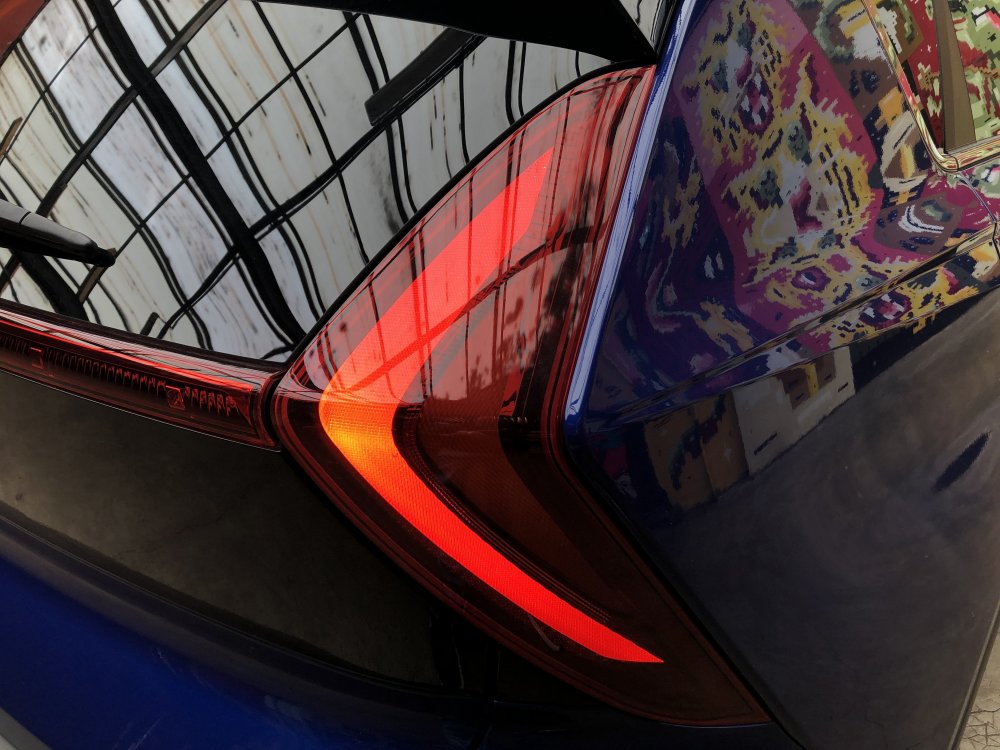 Bayon also includes several features that gently redirect the driver’s attention when their focus slips. Driver Attention Warning (DAW) analyses driving patterns to help detect drowsy or distracted driving. This system works in tandem with Leading Vehicle Departure Alert (LVDA), which alerts the driver when the vehicle ahead of them starts moving forward and they do not react quickly enough.
Bayon also includes several features that gently redirect the driver’s attention when their focus slips. Driver Attention Warning (DAW) analyses driving patterns to help detect drowsy or distracted driving. This system works in tandem with Leading Vehicle Departure Alert (LVDA), which alerts the driver when the vehicle ahead of them starts moving forward and they do not react quickly enough.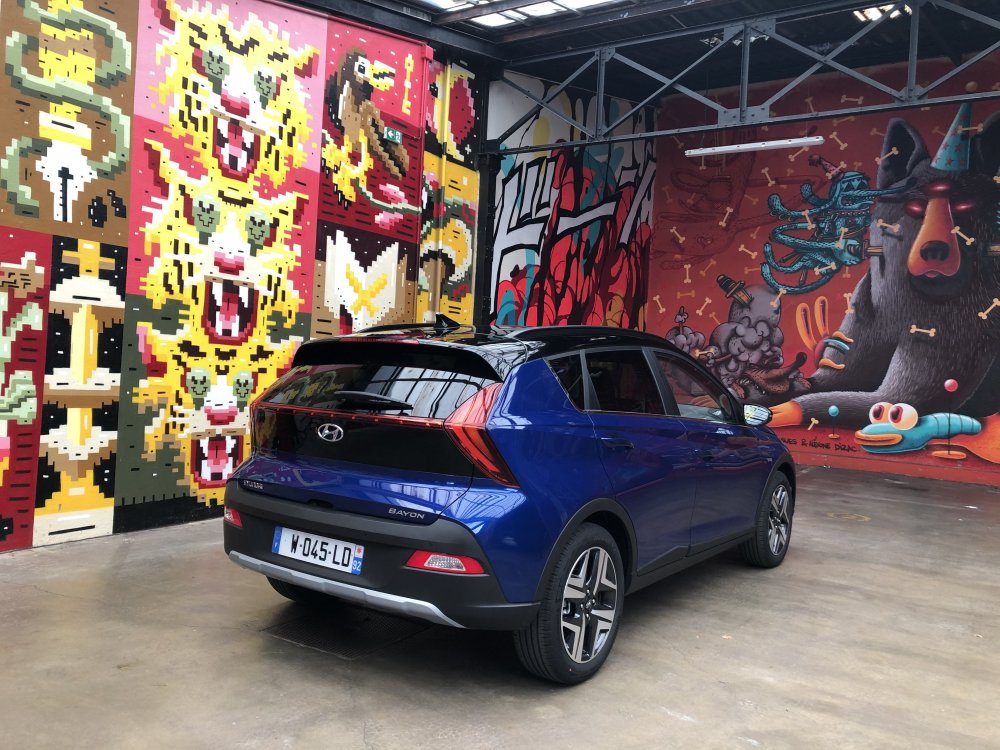 In addition, Rear Occupant Alert (ROA) notifies the driver before leaving the vehicle if sensors detect movement in the back seat. This makes Bayon even safer for rear passengers, including children or pets, making it a great choice for families.
In addition, Rear Occupant Alert (ROA) notifies the driver before leaving the vehicle if sensors detect movement in the back seat. This makes Bayon even safer for rear passengers, including children or pets, making it a great choice for families.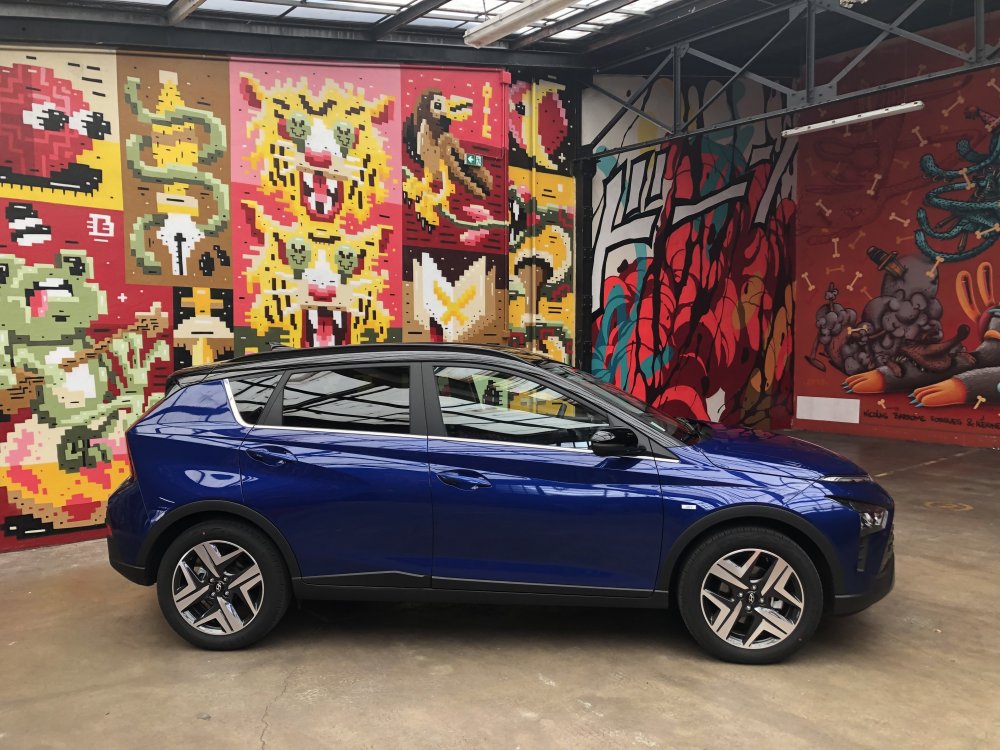 Still, other features ensure safety when driving at low speeds, or when parking. Parking Collision-Avoidance Assist-Reverse (PCA-R) provides a warning and, if necessary, applies the brakes when a rear obstacle is detected when the car is reversing slowly. Rear Cross-Traffic Collision-Avoidance Assist (RCCA) assists drivers in a similar manner when they are backing out of a parking space and another car passes by.
Still, other features ensure safety when driving at low speeds, or when parking. Parking Collision-Avoidance Assist-Reverse (PCA-R) provides a warning and, if necessary, applies the brakes when a rear obstacle is detected when the car is reversing slowly. Rear Cross-Traffic Collision-Avoidance Assist (RCCA) assists drivers in a similar manner when they are backing out of a parking space and another car passes by.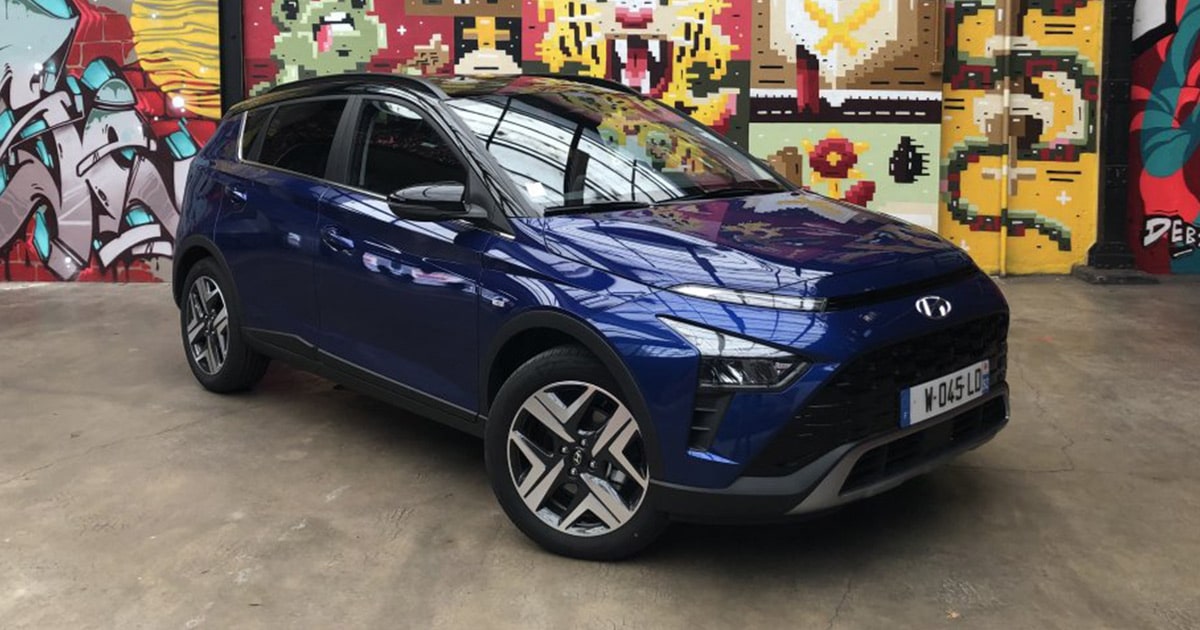 And Parking Assist (PA) allows for semi-autonomous parking, with a range of sensors and software working together to help drivers get into tight spaces. In case of an accident, eCall will automatically alert emergency services if the vehicle’s airbags are deployed. Alternatively, occupants can also activate this feature with the press of a button.
And Parking Assist (PA) allows for semi-autonomous parking, with a range of sensors and software working together to help drivers get into tight spaces. In case of an accident, eCall will automatically alert emergency services if the vehicle’s airbags are deployed. Alternatively, occupants can also activate this feature with the press of a button.
 The all-new Bayon features a compact exterior, a roomy interior, and a long list of intelligent safety and connectivity features that make it stand out in its segment. It gets styling cues inspired by the latest Kona. These include the thin DRLs and arrow-shaped headlamps. The arrow-shaped theme also continues at the back, which gets a similar design. The Bayon SUV gets strong shoulder lines at the side, but the tapering roofline gives it more of a crossover-like look. Strong cladding all around and faux skid plates at the front and back give it a more rugged appearance.
The all-new Bayon features a compact exterior, a roomy interior, and a long list of intelligent safety and connectivity features that make it stand out in its segment. It gets styling cues inspired by the latest Kona. These include the thin DRLs and arrow-shaped headlamps. The arrow-shaped theme also continues at the back, which gets a similar design. The Bayon SUV gets strong shoulder lines at the side, but the tapering roofline gives it more of a crossover-like look. Strong cladding all around and faux skid plates at the front and back give it a more rugged appearance. Bayon features a clean, roomy, well-lit interior. There is a strong focus on maximizing front and rear passenger comfort and increasing boot space. The interior is defined by a range of connectivity equipment, including a 10.25-inch digital cluster and a 10.25-inch AVN or 8-inch Display Audio. Occupants can benefit from LED ambient lighting technology integrated into the front passenger foot areas, door wells, and front door pull handle areas, as well as the storage area below the center console.
Bayon features a clean, roomy, well-lit interior. There is a strong focus on maximizing front and rear passenger comfort and increasing boot space. The interior is defined by a range of connectivity equipment, including a 10.25-inch digital cluster and a 10.25-inch AVN or 8-inch Display Audio. Occupants can benefit from LED ambient lighting technology integrated into the front passenger foot areas, door wells, and front door pull handle areas, as well as the storage area below the center console. Hyundai says the Bayon is an Urban-focused vehicle and its interior has been designed keeping in mind utility, space, and comfort. A 2,580mm wheelbase (identical to the i20’s) allows front-seat passengers 1,072mm of legroom, while the rear seats offer 882mm, and the 411-liter boot can be extended to 1,205 liters with the split rear bench folded flat.
Hyundai says the Bayon is an Urban-focused vehicle and its interior has been designed keeping in mind utility, space, and comfort. A 2,580mm wheelbase (identical to the i20’s) allows front-seat passengers 1,072mm of legroom, while the rear seats offer 882mm, and the 411-liter boot can be extended to 1,205 liters with the split rear bench folded flat. Two engine options are offered on the Bayon globally. At the top of the line-up is a 1.0-liter T-GDi engine with 48V and 120 or 100 PS. This can be coupled with the 6-speed intelligent Manual Transmission (6iMT) or a 7-speed dual-clutch transmission (7DCT). The 100 PS version of the 1.0-liter T-GDi is also available without 48V and can be paired with a 6-speed manual transmission (6MT) or 7DCT. The 1.0-liter T-GDi engine with and without 48V also comes with three drive modes to optimize the engine response and steering performance based on driving conditions. These are Eco, Normal, and Sport. A 1.2-liter MPi engine with 84 PS paired with 5MT is available as well.
Two engine options are offered on the Bayon globally. At the top of the line-up is a 1.0-liter T-GDi engine with 48V and 120 or 100 PS. This can be coupled with the 6-speed intelligent Manual Transmission (6iMT) or a 7-speed dual-clutch transmission (7DCT). The 100 PS version of the 1.0-liter T-GDi is also available without 48V and can be paired with a 6-speed manual transmission (6MT) or 7DCT. The 1.0-liter T-GDi engine with and without 48V also comes with three drive modes to optimize the engine response and steering performance based on driving conditions. These are Eco, Normal, and Sport. A 1.2-liter MPi engine with 84 PS paired with 5MT is available as well. Bayon is the first Hyundai SUV to come equipped with Rev Matching, a feature usually reserved for Hyundai’s high-performance models. Rev matching synchronizes the engine to the output shaft, allowing for smoother or sportier downshifts. It will be available for the 1.0-liter T-GDi engine when paired with the 7DCT for all drive modes, and for the 1.0-liter T-GDi engine with 48V when paired with the 6iMT in the Sport mode.
Bayon is the first Hyundai SUV to come equipped with Rev Matching, a feature usually reserved for Hyundai’s high-performance models. Rev matching synchronizes the engine to the output shaft, allowing for smoother or sportier downshifts. It will be available for the 1.0-liter T-GDi engine when paired with the 7DCT for all drive modes, and for the 1.0-liter T-GDi engine with 48V when paired with the 6iMT in the Sport mode. Bayon shares its safe and robust DNA with the other members of the Hyundai SUV family, and it has the safety features to match. A number of semi-autonomous driving features set BAYON apart from its competitors. Lane Following Assist (LFA) works to keep the vehicle centered in its lane. Forward Collision-Avoidance Assist (FCA) first sounds an alarm, then, if necessary, applies the brakes to prevent a collision from occurring.
Bayon shares its safe and robust DNA with the other members of the Hyundai SUV family, and it has the safety features to match. A number of semi-autonomous driving features set BAYON apart from its competitors. Lane Following Assist (LFA) works to keep the vehicle centered in its lane. Forward Collision-Avoidance Assist (FCA) first sounds an alarm, then, if necessary, applies the brakes to prevent a collision from occurring. This feature includes car, pedestrian, and cyclist detection, as well as Junction Turning, which can apply the brakes to prevent a collision with an oncoming car when turning left at an intersection. Another advanced feature, Navigation-based Smart Cruise Control (NSCC), uses data from the vehicle’s navigation system to adjust speed autonomously when driving on a highway or expressway.
This feature includes car, pedestrian, and cyclist detection, as well as Junction Turning, which can apply the brakes to prevent a collision with an oncoming car when turning left at an intersection. Another advanced feature, Navigation-based Smart Cruise Control (NSCC), uses data from the vehicle’s navigation system to adjust speed autonomously when driving on a highway or expressway. Bayon also includes several features that gently redirect the driver’s attention when their focus slips. Driver Attention Warning (DAW) analyses driving patterns to help detect drowsy or distracted driving. This system works in tandem with Leading Vehicle Departure Alert (LVDA), which alerts the driver when the vehicle ahead of them starts moving forward and they do not react quickly enough.
Bayon also includes several features that gently redirect the driver’s attention when their focus slips. Driver Attention Warning (DAW) analyses driving patterns to help detect drowsy or distracted driving. This system works in tandem with Leading Vehicle Departure Alert (LVDA), which alerts the driver when the vehicle ahead of them starts moving forward and they do not react quickly enough. In addition, Rear Occupant Alert (ROA) notifies the driver before leaving the vehicle if sensors detect movement in the back seat. This makes Bayon even safer for rear passengers, including children or pets, making it a great choice for families.
In addition, Rear Occupant Alert (ROA) notifies the driver before leaving the vehicle if sensors detect movement in the back seat. This makes Bayon even safer for rear passengers, including children or pets, making it a great choice for families. Still, other features ensure safety when driving at low speeds, or when parking. Parking Collision-Avoidance Assist-Reverse (PCA-R) provides a warning and, if necessary, applies the brakes when a rear obstacle is detected when the car is reversing slowly. Rear Cross-Traffic Collision-Avoidance Assist (RCCA) assists drivers in a similar manner when they are backing out of a parking space and another car passes by.
Still, other features ensure safety when driving at low speeds, or when parking. Parking Collision-Avoidance Assist-Reverse (PCA-R) provides a warning and, if necessary, applies the brakes when a rear obstacle is detected when the car is reversing slowly. Rear Cross-Traffic Collision-Avoidance Assist (RCCA) assists drivers in a similar manner when they are backing out of a parking space and another car passes by. And Parking Assist (PA) allows for semi-autonomous parking, with a range of sensors and software working together to help drivers get into tight spaces. In case of an accident, eCall will automatically alert emergency services if the vehicle’s airbags are deployed. Alternatively, occupants can also activate this feature with the press of a button.
And Parking Assist (PA) allows for semi-autonomous parking, with a range of sensors and software working together to help drivers get into tight spaces. In case of an accident, eCall will automatically alert emergency services if the vehicle’s airbags are deployed. Alternatively, occupants can also activate this feature with the press of a button. Published Date: 2021-05-07 09:18:19
Post Comments
Most Read This Week
More International News
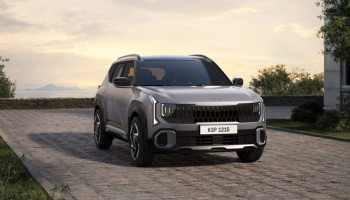
All-New Kia Seltos Unveiled Ahead of January 2 Launch in India
December 12, 2025
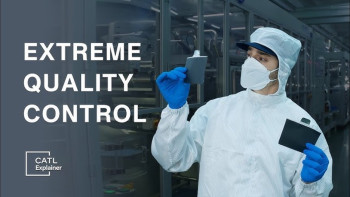
Golden Shield Battery: A New Benchmark for EV Safety in Nepal
December 11, 2025
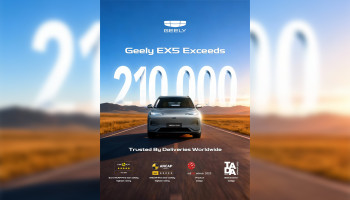
Geely EX5 Crosses 210,000 Global Sales, Marks Strong Debut in Nepal
November 10, 2025












